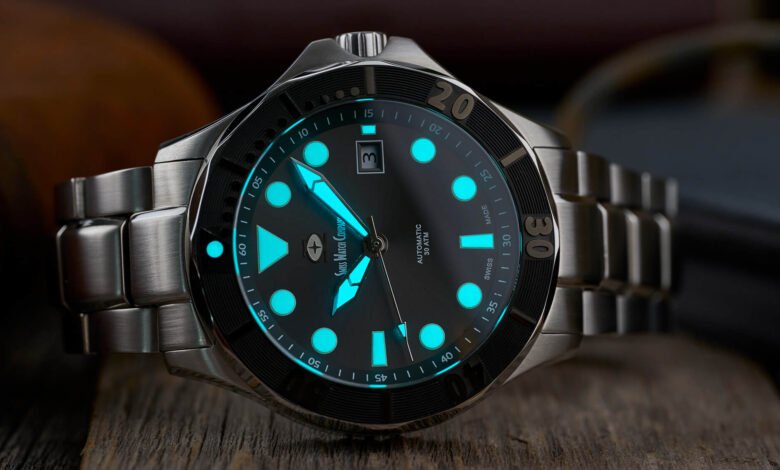The Comprehensive Guide to Swiss Watches Movements

Introduction
Swiss watches movements are synonymous with precision, craftsmanship, and luxury. Renowned for their meticulous design and historical significance, these movements have set the standard in horology. This guide explores the history, key features, leading brands, and comparisons of Swiss watches movements with other types of watch movements.
Historical Overview
Origins and Evolution
Swiss watchmaking began in the 16th century with French Huguenots bringing their skills to Geneva. Over centuries, the Swiss perfected their craft, establishing Geneva and the Jura Mountains as centers of high-quality watch production. The 18th and 19th centuries marked significant advancements in mechanical movements, including the development of complications like chronographs and perpetual calendars, cementing Switzerland’s reputation as a leader in precision watchmaking.
Key Features of Swiss Watches Movements
Mechanical Movements
Swiss mechanical movements are renowned for their complexity and precision. These movements rely on intricate assemblies of gears and springs, meticulously engineered to maintain accurate time. Key components include:
- Mainspring: Stores and releases energy to power the movement.
- Balance Wheel: Oscillates to regulate timekeeping.
- Escapement: Controls the release of energy from the mainspring.
Automatic Movements
Automatic, or self-winding, movements build upon mechanical movements by incorporating a rotor that winds the mainspring using the motion of the wearer’s wrist. This innovation eliminates the need for manual winding, enhancing convenience and usability.
Quartz Movements
While Swiss watchmakers are famed for mechanical watches, they also produce high-quality quartz watches. Introduced in the 1970s, quartz movements use a battery and a quartz crystal to keep time, offering exceptional accuracy and low maintenance.
Advantages of Swiss Watches Movements
Precision and Accuracy
Swiss watches are known for their exceptional accuracy. Mechanical movements are finely tuned to COSC (Contrôle Officiel Suisse des Chronomètres) standards, ensuring they meet stringent criteria for precision.
Craftsmanship and Quality
Swiss watchmakers are dedicated to craftsmanship, swiss watches movements often hand-finishing components and using premium materials. This meticulous attention to detail ensures durability and aesthetic appeal.
Heritage and Prestige
Owning a Swiss watch is a symbol of luxury and status. Brands like Rolex, Patek Philippe, and Omega are associated with a rich heritage and a commitment to excellence, making their watches highly coveted.
Leading Swiss Watch Brands
Rolex
Rolex is synonymous with luxury and precision. Founded in 1905, the brand is known for pioneering innovations like the first waterproof wristwatch, the Oyster, and the self-winding Perpetual movement. Rolex watches are celebrated for their robustness, reliability, and timeless design.
Patek Philippe
Established in 1839, Patek Philippe is revered for its complicated watches and exquisite craftsmanship. The brand’s creations, such as the Calatrava and Nautilus, are highly sought after by collectors and connoisseurs, often appreciating in value over time.
Omega
Omega, founded in 1848, gained fame for its role in space exploration and its association with the Olympic Games. Known for its innovative movements, Omega’s co-axial escapement technology significantly reduces friction, enhancing the longevity and precision of its watches.
TAG Heuer
TAG Heuer, established in 1860, is renowned for its chronographs and sports watches. The brand’s commitment to precision and innovation is evident in models like the Carrera and Monaco, which combine cutting-edge technology with sleek design.
Comparing Swiss Watches Movements with Others
Swiss vs. Japanese Movements
Craftsmanship and Design:
- Swiss Movement: Emphasizes luxury, intricate craftsmanship, and hand-finished components.
- Japanese Movement: Focuses on functionality, innovation, and mass production with consistent quality.
Technological Innovation:
- Swiss Movement: Innovations center around mechanical complications, such as tourbillons and perpetual calendars.
- Japanese Movement: Leaders in quartz technology and hybrid movements, such as Seiko’s Spring Drive and Citizen’s Eco-Drive.
Market Position:
- Swiss Movement: Dominates the luxury watch market, appealing to collectors and enthusiasts.
- Japanese Movement: Serves a broader market, offering high-quality, innovative timepieces at various price points.
Swiss vs. German Movements
Craftsmanship:
- Both Swiss and German watchmakers are known for their exceptional craftsmanship. However, German watches, particularly those from Glashütte, emphasize a distinct aesthetic with a focus on traditional techniques and finishes.
Innovation:
- Swiss brands lead in both mechanical and quartz innovations, while German brands often highlight their mastery of mechanical complications and traditional watchmaking art.
Market Position:
- Swiss watches dominate the global market in terms of volume and prestige. German watches, while also luxurious, often appeal to niche markets and connoisseurs who appreciate their unique style and craftsmanship.
Maintenance and Care
Swiss watches movements, particularly mechanical and automatic models, require regular maintenance to ensure optimal performance. Routine servicing by skilled watchmakers includes cleaning, lubrication, and calibration. Quartz watches, while requiring less maintenance, still need periodic battery replacements and check-ups to ensure accuracy.
Investment Value
Swiss watches are often seen as valuable investments. Limited editions and vintage models from prestigious brands can appreciate significantly over time. Collectors and investors consider factors such as brand reputation, model rarity, and historical significance when evaluating the potential investment value of a Swiss watch.
Conclusion
Swiss watches movements represent the pinnacle of horological excellence, combining precision, craftsmanship, and luxury. With a rich history of innovation and an unwavering commitment to quality, Swiss watches are cherished by collectors and enthusiasts worldwide. Whether you’re drawn to the intricate mechanics of a Patek Philippe, the robust reliability of a Rolex, or the innovative design of an Omega, Swiss watches movements offer something exceptional for every discerning taste. As you explore the world of Swiss horology, you’ll discover timepieces that are not only functional and beautiful but also timeless treasures that can be passed down through generations.





